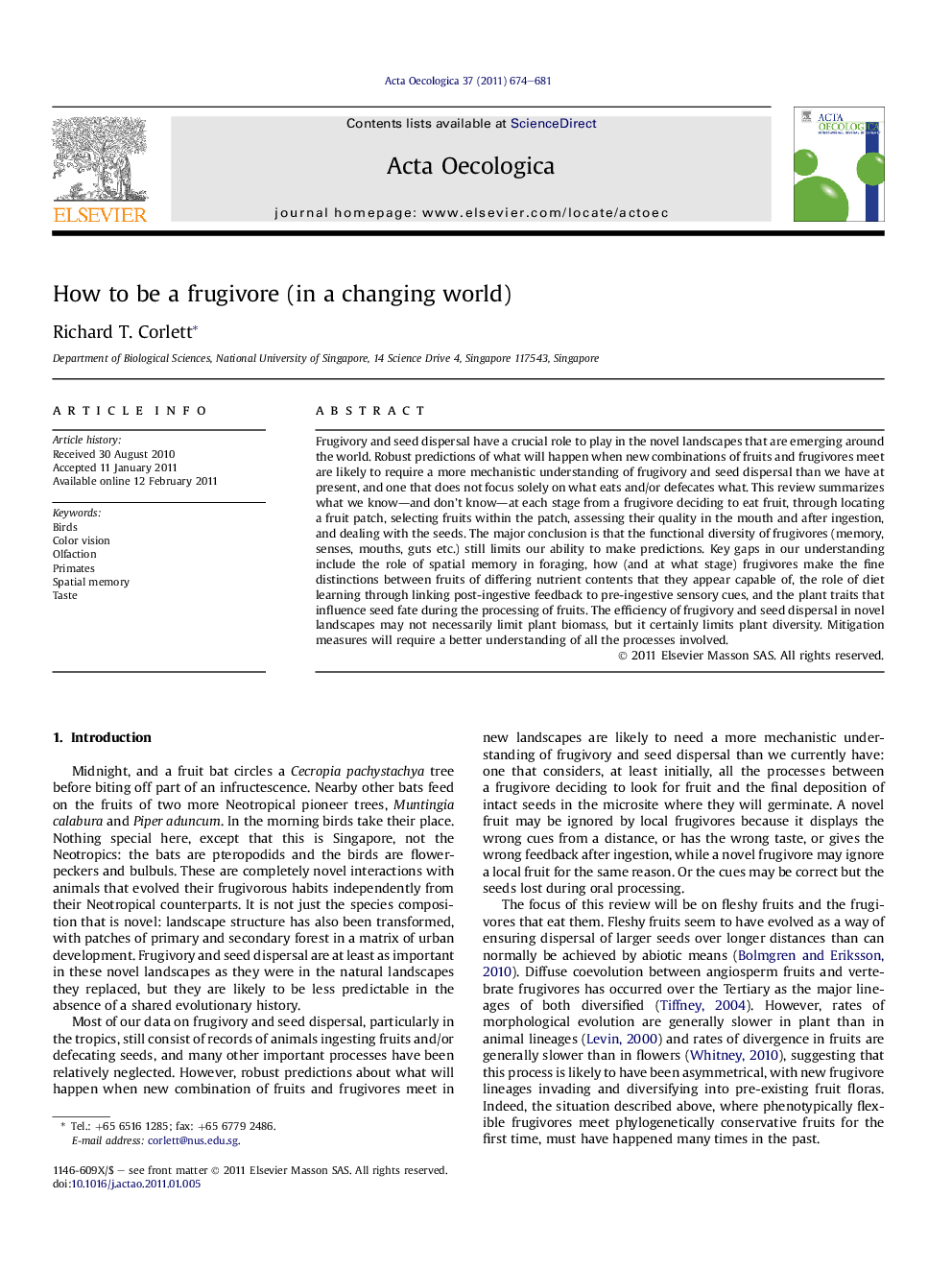| کد مقاله | کد نشریه | سال انتشار | مقاله انگلیسی | نسخه تمام متن |
|---|---|---|---|---|
| 4381359 | 1304067 | 2011 | 8 صفحه PDF | دانلود رایگان |

Frugivory and seed dispersal have a crucial role to play in the novel landscapes that are emerging around the world. Robust predictions of what will happen when new combinations of fruits and frugivores meet are likely to require a more mechanistic understanding of frugivory and seed dispersal than we have at present, and one that does not focus solely on what eats and/or defecates what. This review summarizes what we know—and don’t know—at each stage from a frugivore deciding to eat fruit, through locating a fruit patch, selecting fruits within the patch, assessing their quality in the mouth and after ingestion, and dealing with the seeds. The major conclusion is that the functional diversity of frugivores (memory, senses, mouths, guts etc.) still limits our ability to make predictions. Key gaps in our understanding include the role of spatial memory in foraging, how (and at what stage) frugivores make the fine distinctions between fruits of differing nutrient contents that they appear capable of, the role of diet learning through linking post-ingestive feedback to pre-ingestive sensory cues, and the plant traits that influence seed fate during the processing of fruits. The efficiency of frugivory and seed dispersal in novel landscapes may not necessarily limit plant biomass, but it certainly limits plant diversity. Mitigation measures will require a better understanding of all the processes involved.
► Summarizes what we know and don't know about the mechanisms of frugivory.
► Considers spatial memory, sensory cues, and post-ingestive feedback.
► Identifies key gaps in our current understanding.
Journal: Acta Oecologica - Volume 37, Issue 6, November–December 2011, Pages 674–681